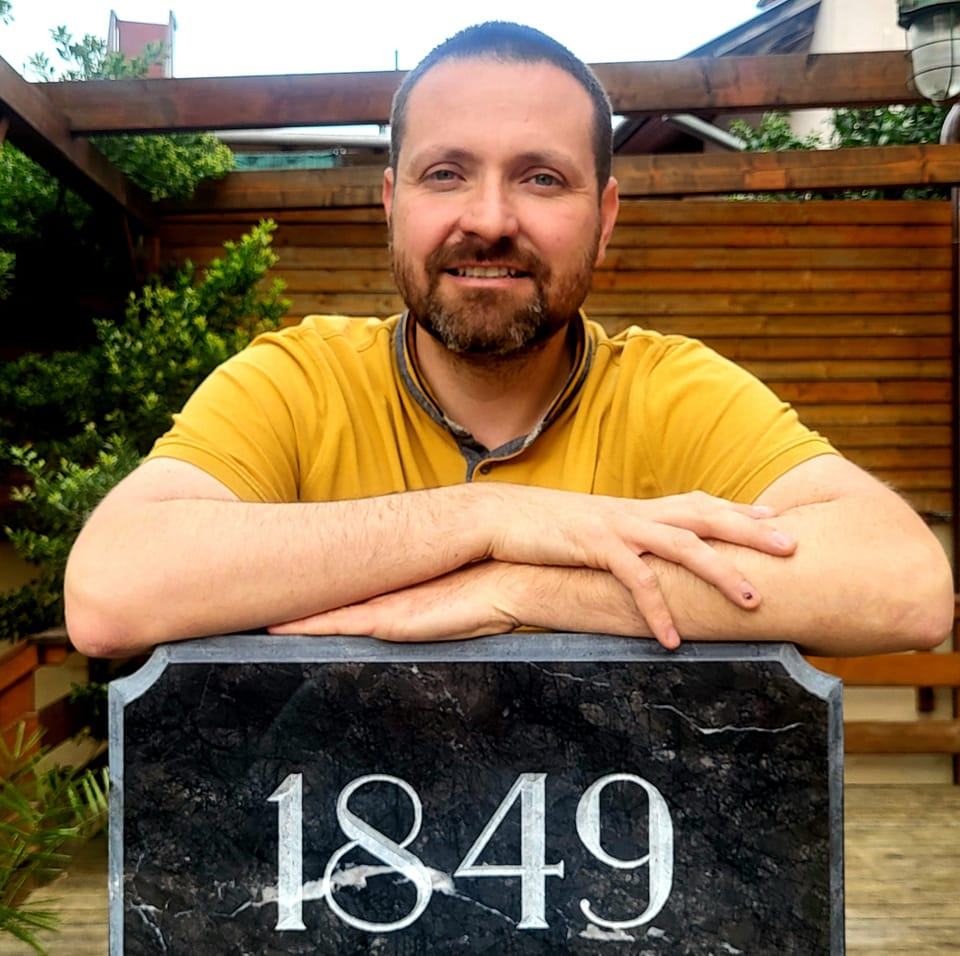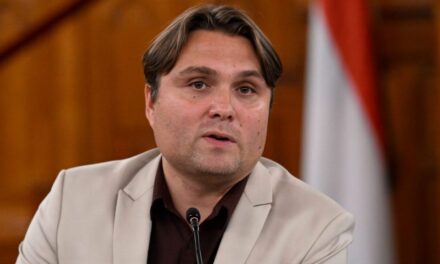The name of Orosz Orosz is associated with the demonstration in Bratislava in the case of Malina Hedvig, who was persecuted because of her Hungarian identity (it was perhaps the largest Hungarian-related movement since the 1920s), but he organized one to save the Hungarian-language small schools when a coffin was brought to the Parliament in Bratislava. Then it was possible to create a general consensus regarding the Hungarian political movements in Slovakia, which brought together those who do not necessarily have the same political point of view, or he even took up the issue of the pollution of the Sajó.
- After a hundred days passed and they refused to deal with the matter, I pumped out a thousand liters of the polluted water and poured it out at the main entrance of the Ministry of Environmental Protection in Bratislava. This is how the case was mediatized, and things got started. In addition, I am also dealing with the underground drinking water pollution in Csallóközi, this is the waste dump in Vereknye - said Örs Orosz, who is also working with his association to save Hungarian monuments in the highlands.
- I would highlight three aspects of the organized rescue of valuables in the Highlands: one is the rescue and research of monuments. This includes the fact that we have just published the thousand-page encyclopedia of the monuments of the Highlands, with eleven thousand entries. Illustrated with six thousand pictures, twenty-two maps, and cross-sectional drawings of about seventy buildings, this thousand-page book covers the historical landscapes of the Highlands, and it is worth knowing that it also helps you navigate with a Hungarian-Slovak and Slovak-Hungarian place name index. The Hungarian presentation of the publication "Slovakia - Pictorial Encyclopaedia of the Monuments of the Historical Highlands" will take place on October 25 in Budapest, at the National Museum, said Orosz Örsz.
The volume is the first Hungarian edition of Peter Kresá's large-scale monumental book. He was the mayor of Bratislava for two terms after the regime change, and then became a member of parliament. He is an art historian by qualification. He also intends to improve the quality of tourism in the Highlands. The translator is a geographer from the highlands who knows the environment thoroughly - this is also evident from the fact that he sent back a thirty-two-page register of the data to be corrected; these corrections were included in the Hungarian version, so it would be worthwhile to translate this back into Slovak... - explained the head of the NGO.

Photo: Orosz Ors Facebook
The research part of the salvage consists of excavations and georadar research. In such cases, they strive to place more and more deposits on the map.
– In total, we initiated more than twenty excavations, which is more than the portfolio of any district museum in Slovakia in the last decade. Within the framework of our activity's heritage protection activities, we have managed to save many heritage buildings, I can say that they are usually from the throat of death. This is where we brought back, for example, the Andrássy mansion in Gombaszö, and founded our association museum here. This is the first association museum of the Highlands, we have equipped the exhibition with medieval, original artefacts, which are findings from our own excavations. So far, there are five listed buildings in the list of listed buildings in which we have effectively contributed to their rescue, and the association currently owns four listed buildings; and two that do not enjoy this status, but are important historical monuments. The other pillar of monument protection is the "little memories", symbols of our identity, so for example the previously demolished public monuments also belong to this category. I could list fourteen noteworthy stories in this category. I described these in my book Our Statue Fates or four hundred and fifty pages. We explored the fate of about ninety Hungarian monuments that were torn down after Trianon, and we set ourselves the goal of rescuing them, and we have succeeded in rehabilitating fourteen of these monuments so far. – Örs Orosz detailed their activities, who also listed specific monument rescues in the interview:
- Among other things, it was possible to restore the one hundred and ten centimeter bronze plaque of the former Minister of Justice Dezső Szilágyi to Tarajka, the highest point of the High Tatras, accessible by road, or, for example, it was also possible to recast the first public national defense monument in the Highlands that had been knocked down and broken into five pieces. This is the honvéd statue in Lőcs, and it is currently located in Gombaszög. We also succeeded in excavating the very first monument of the Carpathian Basin from 1848, which was erected in 1851 during the greatest repression, the Bach era, in a small village in Sáros, twenty kilometers from the Polish border. We re-erected this monument this year, on the 175th anniversary of the war of independence, together with our Slovak friends. We found the buried plinth of the military statue in Kassa, we also rebuilt the fallen plinth of the military statue in Selmecbánya, and I could list the fourteen smaller and larger projects, said the researcher.

Photo: Orosz Ors Facebook
The third pillar of value preservation is the presentation of these memories, making them public property, putting them "on the map". This is mainly a kind of social network work, here people who know multimedia are called in to help, and we constantly communicate on the Internet. This is how they are trying to improve the status of the Highlands and move a little higher on the tourist map of the Carpathian Basin.
- There is room for improvement, we are far behind, for example, in terms of building the image of Transylvania. However, jumping to the Tatras or Gömör from Hungary is a matter of one or two hours - stressed the head of the Sine Metu association.
Cover photo: Minister of Justice Dezső Szilágyi, the great benefactor of the holiday resorts that formed the predecessors of today's Magastátra city and of Tatra tourism, is returning tonight to the highest point of the Tatra accessible by road, Tarajka (Hrebienok).
The excellent work of Ádám Éliás was cast and chiseled by Zsolt Bartusz. Photo: Orosz Ors Facebook













